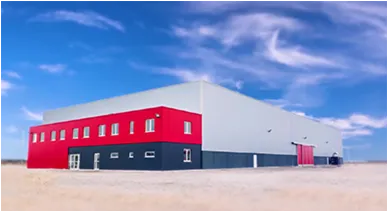- Afrikaans
- Albanian
- Amharic
- Arabic
- Armenian
- Azerbaijani
- Basque
- Belarusian
- Bengali
- Bosnian
- Bulgarian
- Catalan
- Cebuano
- Corsican
- Croatian
- Czech
- Danish
- Dutch
- English
- Esperanto
- Estonian
- Finnish
- French
- Frisian
- Galician
- Georgian
- German
- Greek
- Gujarati
- Haitian Creole
- hausa
- hawaiian
- Hebrew
- Hindi
- Miao
- Hungarian
- Icelandic
- igbo
- Indonesian
- irish
- Italian
- Japanese
- Javanese
- Kannada
- kazakh
- Khmer
- Rwandese
- Korean
- Kurdish
- Kyrgyz
- Lao
- Latin
- Latvian
- Lithuanian
- Luxembourgish
- Macedonian
- Malgashi
- Malay
- Malayalam
- Maltese
- Maori
- Marathi
- Mongolian
- Myanmar
- Nepali
- Norwegian
- Norwegian
- Occitan
- Pashto
- Persian
- Polish
- Portuguese
- Punjabi
- Romanian
- Russian
- Samoan
- Scottish Gaelic
- Serbian
- Sesotho
- Shona
- Sindhi
- Sinhala
- Slovak
- Slovenian
- Somali
- Spanish
- Sundanese
- Swahili
- Swedish
- Tagalog
- Tajik
- Tamil
- Tatar
- Telugu
- Thai
- Turkish
- Turkmen
- Ukrainian
- Urdu
- Uighur
- Uzbek
- Vietnamese
- Welsh
- Bantu
- Yiddish
- Yoruba
- Zulu
ታኅሣ . 14, 2024 20:10 Back to list
Warehouse Roof Truss Design An Essential Overview
When it comes to constructing warehouses, an essential architectural consideration is the roof structure. Among the various components crucial to a warehouse's stability and functionality, the roof truss design stands out for its importance. This article explores the fundamental aspects of warehouse roof truss design, including types, materials, benefits, and considerations for effective planning.
Understanding Roof Trusses
A roof truss is a structural framework that supports the roof. It distributes the weight of the roof and any additional loads such as snow, wind, and equipment. Trusses are typically triangular in shape, which provides stability and strength. The geometry of a truss enables it to effectively bear loads while using less material compared to traditional framing methods. This characteristic makes trusses particularly advantageous in large-scale structures like warehouses.
Types of Roof Trusses
Several types of trusses can be used in warehouse design, each suitable for different applications and environmental conditions. Here are a few common types
1. King Post Truss This simple truss consists of a central vertical post (the king post) and two angled beams. It's ideal for smaller spans and offers a cost-effective solution.
2. Queen Post Truss Similar to the king post truss but with two vertical posts, the queen post truss can support longer spans and is used in situations where additional strength is necessary.
3. Fink Truss This design is characterized by a web of triangular shapes, allowing for longer spans and greater load distribution. The Fink truss is commonly used in larger warehouses and distribution centers.
4. Warren Truss Featuring equilateral triangles in its design, the Warren truss provides excellent load distribution and is suitable for wide applications, including large-scale warehouses.
5. Bowstring Truss This truss features a curved top chord, providing ample space for tall storage and operation areas. It is often found in warehouses requiring high ceilings.
warehouse roof truss design

Material Choices
The choice of material for trusses significantly impacts the overall strength, cost, and longevity of the structure
. Common materials include- Wood Often used in smaller warehouses, wooden trusses are cost-effective and provide a natural aesthetic. However, they are susceptible to weather damage and pests. - Steel Steel trusses are favored for larger warehouses due to their high strength-to-weight ratio and durability. They require less maintenance compared to wood and can support very large spans. - Aluminum Lightweight and corrosion-resistant, aluminum trusses are suitable for environments where moisture is a concern. However, they can be more expensive than other materials.
Benefits of Truss Design
Opting for a truss system in warehouse design offers numerous benefits
- Load Distribution Trusses evenly distribute loads to the supporting walls, minimizing the risk of structural failure. - Material Efficiency Trusses require less material than standard beams, making them a cost-effective solution for large spaces. - Flexibility in Design Trusses can be customized to fit the specific needs of the warehouse, accommodating various roofing materials and insulation systems. - Space Optimization By utilizing taller trusses, warehouses can maximize vertical storage capabilities, enhancing operational efficiency.
Key Considerations
When planning warehouse roof truss design, several factors should be taken into account
1. Span Requirements The anticipated load and distance between supports dictate the type of truss and material required. 2. Local Building Codes Compliance with local regulations and safety standards is paramount in the design process. 3. Environmental Factors Understanding the climatic conditions, such as wind and snow loads, will influence the truss design and material choice.
4. Aesthetics While functionality is crucial, the visual appeal of the warehouse may also be a consideration in design.
In conclusion, warehouse roof truss design is an integral aspect of warehouse construction that significantly impacts the structure's efficiency, safety, and overall functionality. By understanding the different types of trusses, materials, and their benefits, builders and designers can create effective, durable, and economically viable warehouse structures. An informed approach to roof truss design not only optimizes performance but also ensures compliance with safety standards, paving the way for a successful warehouse operation.
-
Cold Formed Steel Residential Framing
NewsMay.21,2025
-
Innovative Steel Structure Building Solutions
NewsMay.19,2025
-
Innovative Prefab Metal Shed Solutions
NewsMay.19,2025
-
Durable Steel Horse Shelter Solutions
NewsMay.19,2025
-
Durable Metal Shed Solutions
NewsMay.19,2025
-
Durable Big Metal Shed Solutions
NewsMay.19,2025
Products categories
Our Latest News
We have a professional design team and an excellent production and construction team.












